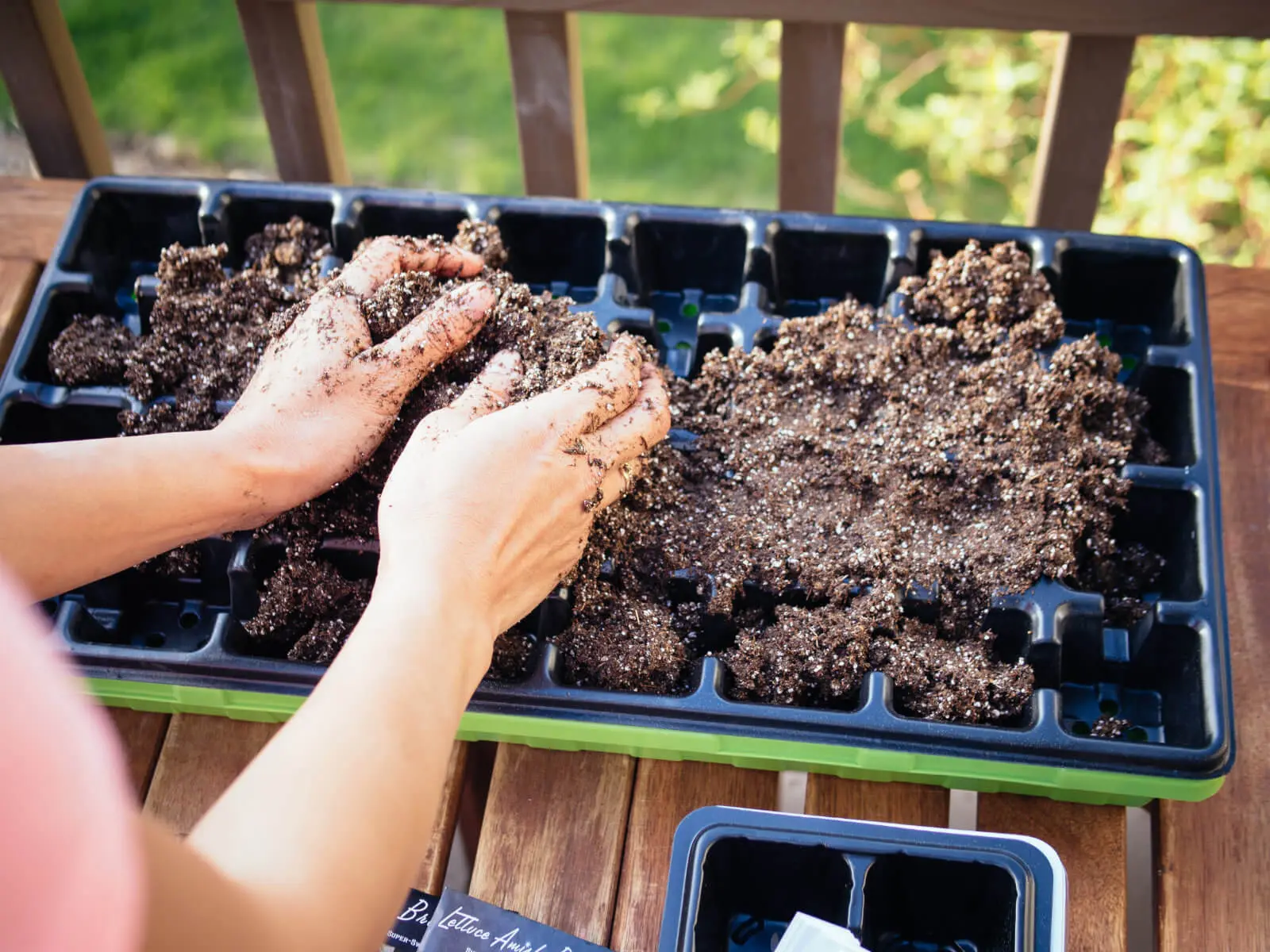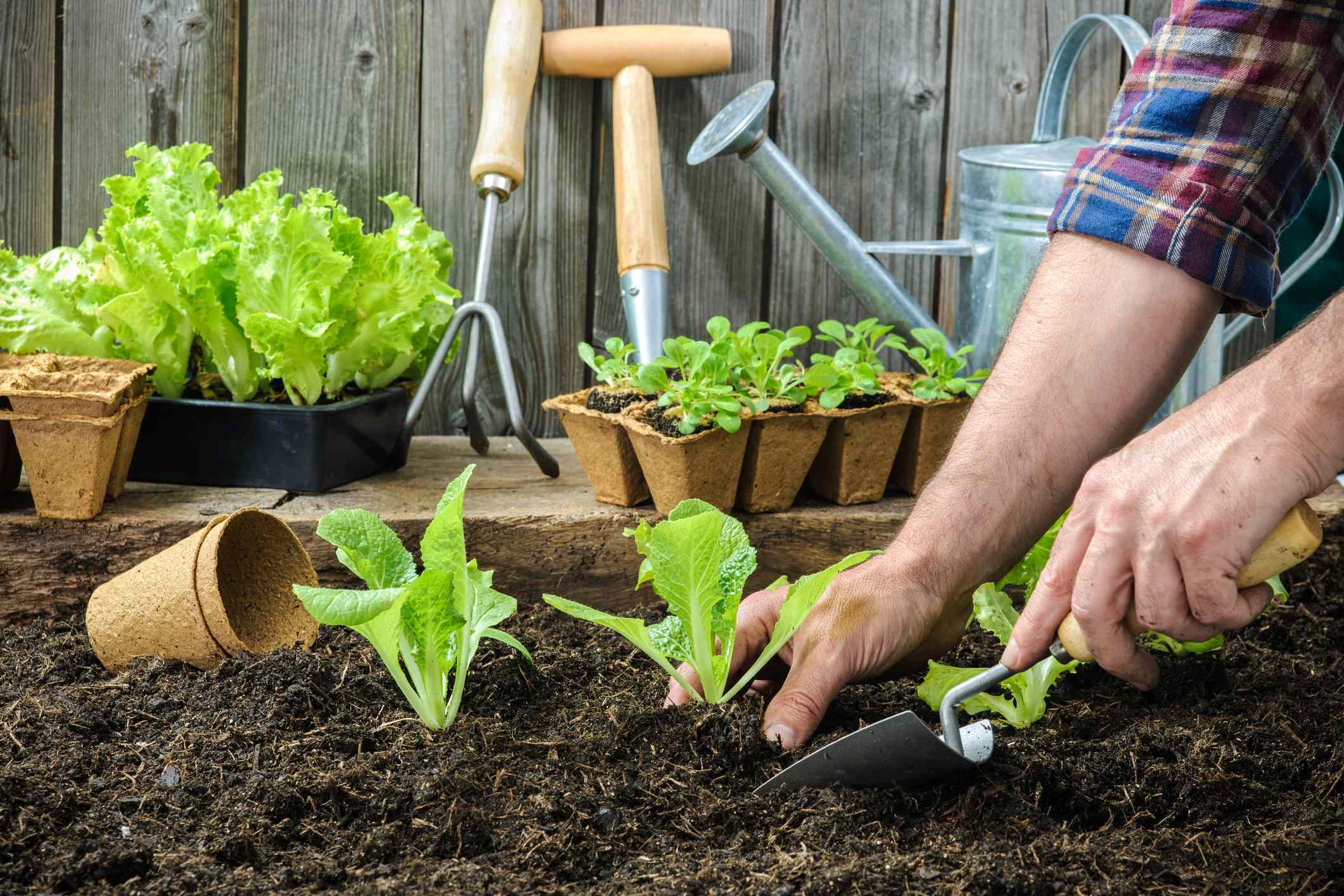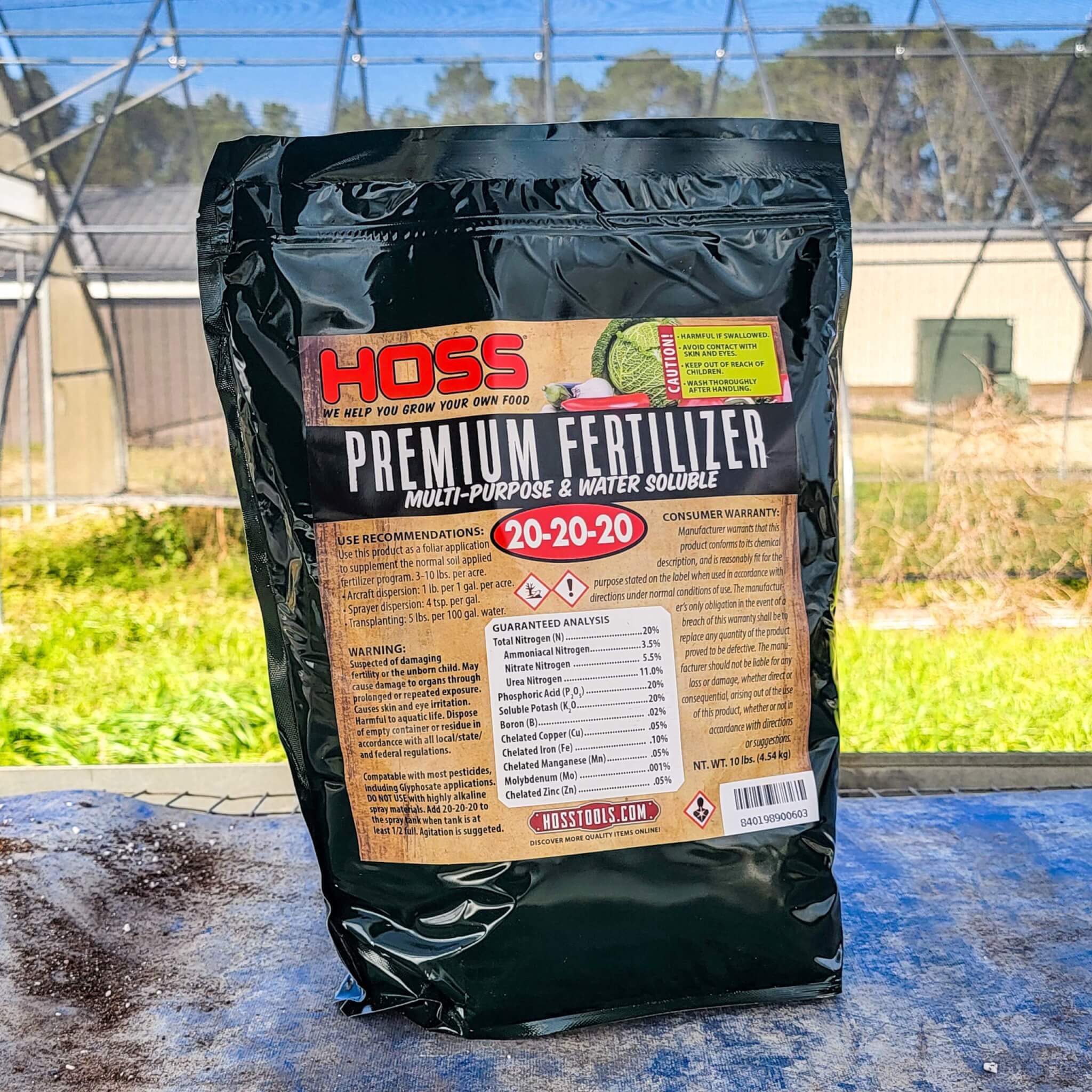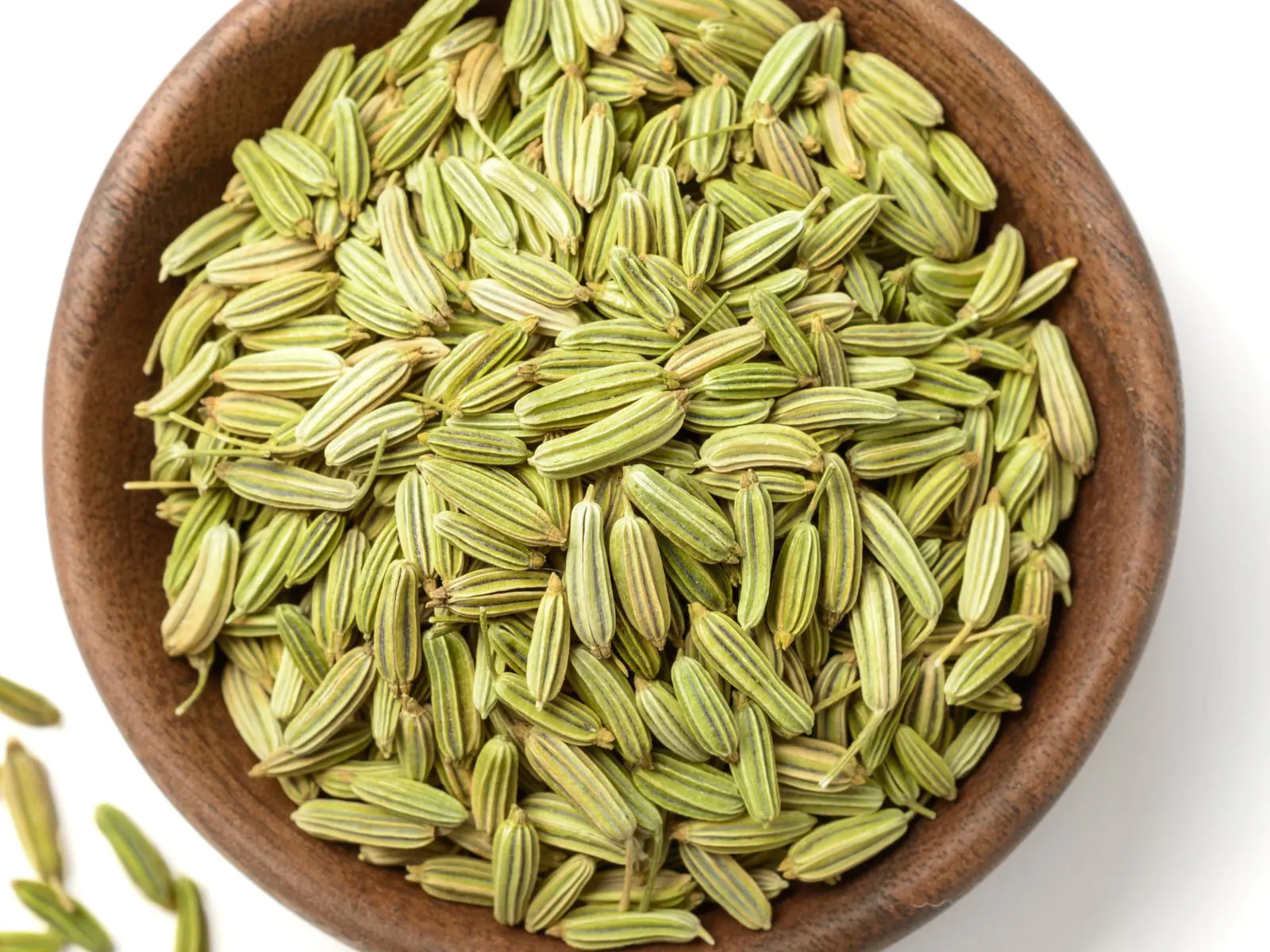Home>Gardening News and Trends>Latest News>What Does Sow Seeds Mean


Latest News
What Does Sow Seeds Mean
Modified: February 10, 2024
Discover the meaning and significance of "sow seeds" in our latest news. Explore the latest updates and insights on the topic.
(Many of the links in this article redirect to a specific reviewed product. Your purchase of these products through affiliate links helps to generate commission for Chicagolandgardening.com, at no extra cost. Learn more)
Table of Contents
Introduction
Welcome to the world of agriculture, where every farmer knows the importance of sowing seeds. Sowing seeds is a fundamental practice in agriculture that involves planting seeds in the soil to grow crops. It is a crucial step in the process of cultivating plants and plays a significant role in determining the success of a harvest.
Sowing seeds is not just a generic farming term; it holds deep meaning and symbolism. Just as a farmer carefully selects and sows seeds to ensure a bountiful yield, our actions and intentions in life can be seen as seeds that we sow. Therefore, understanding the concept of sowing seeds goes beyond the realm of agriculture and can be applied to our personal and professional lives as well.
Sow seeds, quite literally, refers to the act of planting seeds in the ground. The seeds can range from various crops, such as grains, vegetables, fruits, or even flowers. Farmers carefully select the seeds based on their desired objectives and the climatic conditions of their region. They consider factors such as the soil type, temperature, moisture levels, and sunlight requirements before choosing the appropriate seeds.
However, the term “sow seeds” goes beyond the literal act of planting. It is often used metaphorically to represent the deliberate action of initiating a process, planting a seed of thought, or starting something new. Just as seeds contain the potential for growth and development, sowing seeds in life represents the beginning of a journey or the start of a project.
The purpose of sowing seeds is to provide the conditions necessary for the seeds to germinate and grow into healthy plants. During the germination process, the seeds absorb water and nutrients from the soil, which triggers biochemical reactions leading to the emergence of a seedling. This process eventually leads to the development of a fully grown plant with roots, stems, leaves, and eventually flowers or fruits.
Definition of Sow Seeds
Sowing seeds is the act of placing seeds in the soil with the intention of germinating and growing them into plants. It is a crucial step in agriculture and horticulture and is essential for crop production.
Seeds carry the genetic material and potential for growth and development. Sowing seeds involves carefully placing them at the appropriate depth in the soil, ensuring proper spacing and following specific techniques to optimize their growth.
The process of sowing seeds can vary depending on the type of crop and the farming method used. In traditional farming, seeds are manually planted in the soil using either handheld tools or mechanical seeders. In modern agriculture, mechanized techniques such as direct drilling, broadcasting, or precision seeders may be employed.
Seeds can be sown individually or in groups, depending on the crop and desired density. The depth at which seeds are sown also varies based on the size and type of seeds. Small seeds are usually sown shallowly, while larger seeds can be planted deeper in the soil.
It is important to consider the climate, soil conditions, and other environmental factors when sowing seeds. These factors can influence seed germination, establishment, and overall plant growth. Proper timing is also crucial, as sowing seeds at the right time helps ensure optimal conditions for germination and growth.
Various planting methods are employed for sowing seeds, including broadcast seeding, row planting, hill dropping, and transplanting. The choice of method depends on the crop, the available resources, and the farming system. Each method has its advantages and disadvantages, but they all share the common goal of providing the seeds with the best possible conditions for growth.
Sowing seeds also involves considering the spacing between seeds to allow for proper air circulation, light exposure, and efficient use of nutrients. Proper seed spacing helps prevent overcrowding, which can lead to competition for resources and reduced crop yield.
Sowing seeds is a skill that farmers and gardeners develop through experience and knowledge. They take into account the specific requirements of each crop, the local climate, soil conditions, and available resources. With careful planning and execution, the act of sowing seeds sets the foundation for a successful crop and a bountiful harvest.
Purpose of Sowing Seeds
The purpose of sowing seeds goes beyond the simple act of planting. It serves several essential objectives in agriculture and horticulture, contributing to successful crop production and sustaining our food supply.
1. Generation of New Plants: The primary purpose of sowing seeds is to generate new plants. By placing seeds in the soil, farmers and gardeners provide the necessary environment for germination, leading to the growth of seedlings. These seedlings develop into mature plants that bear fruits, vegetables, grains, or flowers, depending on the crop.
2. Crop Production: Sowing seeds is crucial for achieving high crop yields. It is the initial step in the crop production cycle and sets the stage for the entire growth process. With careful selection and sowing of high-quality seeds, farmers can maximize their chances of obtaining healthy and productive crops.
3. Genetic Preservation: Seeds carry the genetic material of plants. By sowing seeds and cultivating new plants, farmers play a vital role in preserving and perpetuating plant species. This is particularly important for heirloom or heritage varieties, which may have unique characteristics and genetic diversity.
4. Biodiversity Conservation: Sowing a diverse range of seeds helps preserve biodiversity in agriculture. By cultivating different varieties of crops, farmers contribute to the preservation of genetic resources and protect against the risk of crop failures due to pests, diseases, or unfavorable environmental conditions.
5. Sustainability and Self-Sufficiency: Sowing seeds enables farmers to sustain their agricultural practices and promotes self-sufficiency. By producing their own seeds, farmers reduce dependence on external seed suppliers, save costs, and have control over the quality and availability of seeds.
6. Renovation and Regeneration: Sowing seeds also serves the purpose of renovating and regenerating agricultural fields. After a crop is harvested, seeds can be sown to replenish the soil with essential nutrients, control erosion, and maintain the productivity of the land.
7. Economic Value: Successful seed sowing leads to a bountiful harvest, which has significant economic value. It allows farmers to generate income by selling their crops in the market. The purpose of sowing seeds, therefore, extends to fulfilling both subsistence and commercial needs.
8. Personal Satisfaction: For many farmers and gardeners, sowing seeds is a deeply satisfying and rewarding process. Witnessing the transformation of tiny seeds into lush plants and subsequently reaping the rewards of their hard work brings a sense of accomplishment and joy.
Overall, the purpose of sowing seeds lies in its potential to support sustainable agriculture, ensure food security, preserve genetic diversity, and promote self-sufficiency. It is a fundamental step in the agricultural journey, paving the way for a fruitful harvest and a resilient food system.
Agricultural Importance of Sowing Seeds
Sowing seeds holds immense agricultural importance as it is the foundation of crop production and plays a crucial role in ensuring food security and sustaining our agricultural systems. The act of sowing seeds encompasses various aspects that contribute to the overall success of agriculture.
1. Yield Maximization: Sowing seeds is essential for maximizing crop yields. By carefully selecting high-quality seeds and sowing them at the optimal time and depth, farmers give their crops the best chance to germinate and establish. This leads to healthier plants with higher yield potential.
2. Crop Diversity: Sowing seeds allows farmers to cultivate a diverse range of crops. This diversity not only provides a varied and nutritious diet but also helps to mitigate the risks associated with monoculture. Different crops have different nutrient requirements, growth cycles, and resilience to pests and diseases. By sowing a variety of seeds, farmers promote a more robust and sustainable agricultural system.
3. Adaptation to Local Conditions: Sowing region-specific seeds is crucial for ensuring that crops are well-suited to the local environment. Local seeds are often adapted to the specific climate, soil conditions, and pests prevalent in the area. By sowing locally adapted seeds, farmers can optimize plant growth and increase the chances of a successful harvest.
4. Genetic Preservation: Sowing seeds is vital for the conservation and preservation of plant genetic diversity. Many crop varieties are under threat from factors like industrial agriculture and changing climatic conditions. By cultivating traditional and heirloom varieties, farmers play a crucial role in safeguarding these genetic resources for future generations.
5. Soil Health and Fertility: Sowing seeds contributes to maintaining and improving soil health and fertility. Different types of crops have varying root systems and nutrient requirements. By rotating crops and implementing proper crop rotation practices, farmers can replenish soil nutrients, prevent soil erosion, and control the spread of pests and diseases.
6. Economic Benefits: Sowing seeds is economically important as it directly impacts the income and livelihood of farmers. Successful seed sowing leads to a successful harvest, which can be sold in the market, providing farmers with an income stream. Additionally, seeds can be saved and used for future plantings, reducing costs and increasing financial sustainability.
7. Food Security: Sowing seeds plays a critical role in ensuring food security. By sowing a wide variety of crop seeds and prioritizing nutritious and staple crops, farmers can contribute to a diverse and sustainable food supply. This is particularly important in regions vulnerable to food scarcity and where access to diverse food options is limited.
8. Environmental Sustainability: Sowing seeds using sustainable agricultural practices can help protect the environment. By practicing organic farming, agroforestry, or conservation agriculture, farmers can minimize the use of synthetic inputs, reduce soil erosion, conserve water resources, and promote biodiversity in agricultural landscapes.
Overall, the agricultural importance of sowing seeds cannot be overstated. It is the first step towards a successful crop and serves as a catalyst for sustainable and resilient agriculture. By understanding the value of sowing seeds, farmers can optimize their practices and contribute to a more sustainable and food-secure future.
Techniques for Sowing Seeds
Sowing seeds involves various techniques that farmers and gardeners employ to ensure optimal seed germination and plant growth. The choice of sowing technique depends on factors such as the type of crop, the farming system, and the available resources.
1. Hand Sowing: Hand sowing is the traditional method of sowing seeds, where farmers manually scatter seeds evenly across the prepared soil. This technique requires skill and experience to achieve proper seed spacing and distribution. Hand sowing is commonly used for small-scale farming, home gardens, and when precision is required, such as for transplanting seedlings.
2. Broadcasting: Broadcasting involves scattering seeds over a wide area. It is commonly used for crops like grass, legumes, or cover crops. The seeds are spread by hand or using mechanical spreaders. Broadcasting is suitable for crops that do not require precise seed spacing and when a dense growth is desired.
3. Drilling: Drilling is a technique that involves planting seeds in rows or furrows. It is typically done using a seed drill or planter, which creates furrows in the soil and drops the seeds at the desired spacing. Drilling ensures better precision in seed placement, improves seed-to-soil contact, and helps conserve seeds by reducing wastage.
4. Hill Dropping: Hill dropping is a technique used for crops that require more space or grow in mounds or hills, such as certain vegetables or tubers. Seeds are planted at specific intervals, usually in groups or clusters, allowing each plant to have sufficient space to grow and develop.
5. Transplanting: Transplanting involves sowing seeds in containers or seedlings trays and later transplanting them into the field. This technique is commonly used for delicate or slow-growing crops that need protection during their early growth stages. Transplanting allows for better control over seedling spacing and timing.
6. Direct Seeding: Direct seeding is the process of sowing seeds directly into the final planting location, avoiding the need for transplanting. It is widely used for many crops, including grains, vegetables, and flowers. Direct seeding can be done by hand or using mechanized equipment such as seeders or planters.
7. Precision Sowing: Precision sowing involves using advanced technologies such as GPS, sensor systems, and automated machinery to precisely place seeds at specific locations and depths. This technique ensures accurate seed spacing, improves uniformity, and optimizes resource usage. Precision sowing is commonly used in large-scale commercial farming.
8. Hydroseeding: Hydroseeding is a technique used for sowing seeds in areas with challenging soil conditions or steep slopes. Seeds are mixed with a slurry of water, seed nutrients, binding agents, and other additives. The mixture is then sprayed onto the area, creating a protective layer that promotes seed germination and prevents soil erosion.
Each sowing technique has its advantages and considerations. The choice of technique depends on factors such as the crop, resources, environmental conditions, and farming objectives. Farmers and gardeners adapt and refine these techniques to maximize seed germination, promote healthy plant growth, and ensure a successful harvest.
Factors Affecting Successful Seed Sowing
Successful seed sowing is influenced by a combination of factors that affect seed germination, seedling establishment, and subsequent plant growth. Understanding and managing these factors is crucial for achieving optimal results in agriculture and horticulture.
1. Soil Quality: The quality and composition of the soil play a significant role in successful seed sowing. Soil texture, structure, pH, and nutrient content can all impact seed germination and seedling development. Well-drained and nutrient-rich soils are generally ideal for most crops, as they provide a conducive environment for root growth and nutrient uptake.
2. Soil Moisture: The moisture level in the soil directly affects seed germination. Seeds require adequate moisture for the activation of enzymes and biochemical processes that trigger germination. Insufficient moisture can result in poor germination rates, while excessive moisture can lead to seed rot or fungal diseases. Maintaining the right soil moisture balance is essential for successful seed sowing.
3. Temperature: Temperature influences the rate of seed germination and affects the overall growth of plants. Different crops have specific temperature requirements for optimal germination. Seeds generally require a certain minimum temperature to initiate germination, while excessively high or low temperatures can inhibit their growth. Understanding the temperature needs of each crop is critical for successful seed sowing.
4. Light Exposure: Some seeds, known as light-dependent seeds, require exposure to light for optimal germination. These seeds generally need to be sown on or near the soil surface. On the other hand, some seeds benefit from being covered with soil as darkness helps trigger germination. Providing the right light exposure condition is important for seed sowing success.
5. Seed Quality: The quality of the seeds used for sowing greatly impacts the success of the process. High-quality seeds have better germination rates, genetic integrity, and disease resistance. Seeds should be sourced from reputable suppliers and properly stored. Vigorous and healthy seeds increase the likelihood of successful germination and robust plant growth.
6. Seed Depth: The depth at which seeds are sown can influence their germination and establishment. Some seeds require specific burial depths for optimal germination, while others may not emerge if they are buried too deep. Following the recommended sowing depth for each crop is important to ensure successful seedling emergence and establishment.
7. Seed Spacing: Proper seed spacing ensures optimal utilization of resources and avoids overcrowding of plants. Insufficient spacing can lead to competition for nutrients, sunlight, and water, resulting in stunted growth and reduced yield. Too much spacing, on the other hand, can result in wasted space and decreased efficiency. Following appropriate seed spacing guidelines is crucial for maximizing seed sowing success.
8. Weed Control: Weeds compete with crop plants for resources, including light, water, and nutrients. Controlling weeds through various means, such as mechanical methods or herbicides, is important to ensure the successful establishment and growth of seedlings. Effective weed management practices should be implemented alongside seed sowing.
By recognizing and addressing these factors, farmers and gardeners can optimize seed sowing success and promote robust plant growth. Attention to soil quality, moisture levels, temperature, light exposure, seed quality, seed depth and spacing, and weed control are key to achieving desired outcomes and maximizing crop productivity.
Benefits of Sowing Seeds
Sowing seeds brings forth a multitude of benefits in agriculture, horticulture, and even our daily lives. From food production to environmental sustainability, the act of sowing seeds holds significant advantages that positively impact individuals and communities.
1. Food Security: Sowing seeds is crucial for ensuring a stable and abundant food supply. By sowing a variety of crop seeds, farmers can cultivate diverse and nutritious food options. This promotes food security by reducing dependence on a single crop and minimizing the risk of crop failure due to pests, diseases, or adverse weather conditions.
2. Crop Diversity: Sowing seeds contributes to the preservation of crop diversity. Different crop varieties have distinct traits, including taste, nutritional content, and resistance to pests and diseases. By sowing seeds of various crop types and varieties, farmers can maintain a rich and diverse collection of agricultural produce.
3. Environmental Conservation: Sowing seeds plays a vital role in environmental conservation. Fields sown with crops prevent soil erosion, stabilize slopes, and conserve water resources. Additionally, certain crops, such as legumes, can fix nitrogen in the soil, minimizing the need for synthetic fertilizers. Sowing seeds of cover crops also helps control weeds, improve soil fertility, and reduce the need for herbicides.
4. Genetic Preservation: Sowing seeds contributes to the preservation and propagation of genetic diversity. Certain traditional and heirloom crop varieties possess unique traits and adaptations that have been handed down through generations. By sowing seeds of these varieties, farmers help safeguard genetic resources and maintain biological resilience in agricultural systems.
5. Cost Efficiency: Sowing seeds presents a cost-effective approach to crop production. By saving and replanting high-quality seeds from previous harvests, farmers can reduce the expenditure associated with purchasing new seeds. This not only lowers production costs but also ensures access to reliable seeds that are well-adapted to the local growing conditions.
6. Self-Sufficiency: Sowing seeds promotes self-sufficiency by enabling individuals and communities to produce their own food. By cultivating fruits, vegetables, and grains, people can enjoy fresh and nutritious produce right from their gardens or fields. This self-sufficiency empowers individuals, reduces reliance on external food sources, and enhances food sovereignty.
7. Nutritional Quality: Sowing seeds allows for the cultivation of nutrient-rich and wholesome foods. Freshly harvested crops are often more nutritious and flavorful than store-bought produce. By sowing seeds and consuming homegrown foods, individuals can enjoy a diet comprising fresh fruits, vegetables, and grains that contribute to better health and well-being.
8. Mental and Physical Well-being: Engaging in the act of sowing seeds has numerous benefits for mental and physical well-being. The process of nurturing plants and watching them grow can impart a sense of connection with nature and provide stress relief. Additionally, the physical activity involved in tending to crops contributes to a healthier lifestyle.
Sowing seeds transcends the realms of agriculture and goes beyond the simple action of planting. It fosters food security, preserves biodiversity, supports the environment, and promotes self-sufficiency. The multitude of benefits derived from sowing seeds enriches not only our plates but also our lives and communities as a whole.
Challenges in Sowing Seeds
Sowing seeds comes with its fair share of challenges that farmers and gardeners must navigate to achieve successful germination and plant growth. Recognizing and addressing these challenges is crucial for ensuring a productive harvest and overcoming potential setbacks.
1. Climate Variability: Farmers often face challenges related to climate variability, including unpredictable weather patterns, extreme temperatures, and irregular precipitation. Sudden temperature fluctuations or prolonged periods of drought or heavy rainfall can adversely affect seed germination and seedling establishment.
2. Pest and Disease Pressure: Pests and diseases pose significant challenges during seed sowing and the subsequent growth stages. Insects, rodents, birds, and other animals may feed on seeds or seedlings, resulting in poor establishment. Fungal, bacterial, or viral infections can also weaken or destroy young plants. Implementing integrated pest management strategies and practicing good crop rotation are essential in mitigating these challenges.
3. Weed Competition: Weeds compete with crops for essential resources such as water, sunlight, and nutrients. Their rapid growth and spread can significantly impact seed germination and young plant development. Effective weed management practices, such as regular cultivation, mulching, or using herbicides, are necessary to suppress weed growth and allow crops to thrive.
4. Soil Quality and Fertility: Poor soil quality, nutrient deficiencies, or imbalances can pose challenges to seedling establishment and subsequent plant growth. Soil compaction, improper pH levels, and lack of organic matter can hinder seed germination and limit nutrient availability. Conducting soil tests, applying appropriate amendments, and practicing good soil management techniques are crucial for overcoming these challenges.
5. Seed Quality and Viability: The quality and viability of seeds directly impact germination rates and plant health. Poor-quality or non-viable seeds can lead to low germination rates, weak seedlings, and reduced crop yields. It is important to source seeds from reputable suppliers and properly store them under suitable conditions to maintain their quality and viability.
6. Timing and Seasonality: Choosing the right time to sow seeds is crucial for successful germination. Seeds sown too early may be exposed to cold temperatures or frost, while sowing too late can result in inadequate growth and maturity. Understanding the specific requirements of each crop, including optimal planting dates, is essential for overcoming timing challenges.
7. Seedling Emergence and Stand Establishment: Uneven or poor seedling emergence can result from various factors, including irregular germination, planting depth variations, or soil crusting. Uneven stands can lead to competition among plants, inefficient resource utilization, and reduced overall crop performance. Ensuring uniform seed placement, proper seed depth, and favorable soil conditions can improve seedling emergence and stand establishment.
8. Limited Resources: Limited access to resources such as land, water, machinery, and capital can pose challenges in sowing seeds and maintaining a successful crop. Small-scale farmers or those with limited resources may face difficulties in procuring quality seeds, implementing advanced equipment, or accessing irrigation systems. Resource optimization, efficient planning, and exploring alternative methods can help address these challenges.
While sowing seeds has numerous benefits, it is important to acknowledge and address the challenges associated with the process. By understanding and mitigating these challenges, farmers and gardeners can enhance their chances of successful seed germination, robust plant growth, and ultimately, a fruitful harvest.
Conclusion
Sowing seeds is a fundamental practice in agriculture and horticulture, essential for crop production, food security, and environmental sustainability. It involves carefully planting seeds in the soil, providing them with the necessary conditions for germination and subsequent plant growth. The act of sowing seeds goes beyond the mere act of planting; it symbolizes the initiation of a journey, the start of new possibilities, and the hope for a bountiful harvest.
The benefits of sowing seeds are diverse and far-reaching. It ensures a stable food supply, promotes crop diversity, conserves genetic resources, and supports self-sufficiency. Sowing seeds also contributes to environmental conservation, nurtures healthier diets, and fosters mental and physical well-being. From farming fields to backyard gardens, sowing seeds empowers individuals and communities to connect with nature, preserve biodiversity, and build resilient agricultural systems.
However, sowing seeds is not without challenges. Climate variability, pest and disease pressure, weed competition, soil quality, and limited resources are hurdles that farmers and gardeners must overcome. Adapting to changing environmental conditions, implementing sustainable pest and weed management strategies, enhancing soil fertility, and optimizing available resources help mitigate these challenges and promote successful seed sowing.
In conclusion, sowing seeds is a vital step in agriculture and horticulture with far-reaching implications. It encompasses not only the physical act of planting seeds but also the nurturing of potential, the fostering of resilience, and the cultivation of sustenance. By understanding and embracing the importance of sowing seeds, we can contribute to a more sustainable and resilient world, where abundant harvests, food security, and ecological balance coexist harmoniously.







